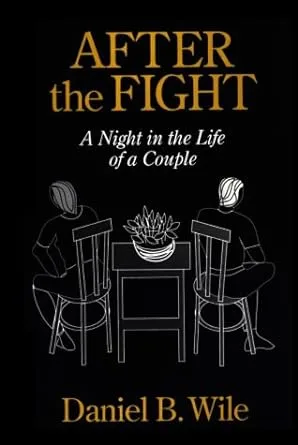Conflict in relationships is unavoidable. But what makes fights spiral isn’t just what we argue about; it’s how we respond when we feel attacked. Daniel Wile, in his classic book After the Fight, mapped out 44 defensive responses that show the many ways we dodge, deflect, or counter when we feel cornered.
Defensiveness is one of the biggest roadblocks to intimacy. Yet most of us don’t even know when we’re doing it.
As I tell clients: “Defensiveness is like blinking; it happens so fast you don’t notice it. But your partner does.”
Why We Get Defensive
Wile stresses that defenses come from a natural urge to protect ourselves. When criticized, we feel exposed. Defensiveness is our attempt to regain balance, dignity, or control.
The problem? Defenses don’t soothe. They escalate. What feels like self-protection to us often feels like dismissal, blame, or attack to our partner.
Wile observed: “Almost every defensive move can also be heard as an attack.” That’s why arguments often snowball—your defense sounds like an offense, which triggers your partner’s defense, and so on.
The 44 Defensive Responses
Wile’s list of 44 defenses covers the whole spectrum of human reactions, from denial to counterattack to withdrawal. He organizes them into categories:
1. Denying (1–4)
-
- “That’s not true.”
-
- “I was just about to do it.”
These responses insist the problem doesn’t exist. To the partner, it feels invalidating.
2. Explaining and Excusing (5–11)
-
- “I thought you wanted space.”
-
- “It’s normal for couples to talk less.”
Here, the person justifies instead of listening, which shuts down dialogue.
3. Counterattacking and Blame-Shifting (12–36)
-
- “You do the same thing.”
-
- “You’re too sensitive.”
-
- “You’re trying to control me.”
This is the largest category. Defenses flip the script back onto the partner.
4. Self-Accusing (37)
-
- “You’re right. I’m terrible. I always screw up.”
This looks like an agreement, but it is really a defense; it shifts focus away from the issue by drowning in shame.
5. Fixing and Premature Solutions (38–41)
-
- “Okay, what do you want me to do?”
-
- “I’ve already improved.”
Jumping to solutions bypasses the feelings that need acknowledgment.
6. Withdrawal (42–44)
-
- “Let’s talk later.”
-
- Silent stonewalling.
-
- Walking out.
Withdrawing feels safer in the moment, but often confirms a partner’s worst fear: that they’re being abandoned.
Why Recognizing Defenses Matters
The genius of Wile’s list is that it forces us to see what we usually deny: our own part in escalation.
He encouraged couples to keep the list nearby—almost like a “cheat sheet”—to catch themselves mid-argument. When partners can say, “That was defense #14, I just shifted the blame,” the fight loses steam.
Awareness turns the spiral into a pause. And in that pause, connection becomes possible again.
As I remind clients: “You don’t have to stop being defensive. You just have to notice it soon enough to do something different.”
Wile’s Tips for Managing Defensiveness
Wile doesn’t suggest eliminating defenses—that would be impossible. Instead, he gives practical ways to manage them:
-
- Name it. Say out loud when you catch yourself being defensive.
Example: “That was me making excuses. Let me try again.”
-
- Shift from defending to validating. Before explaining, reflect on what you heard.
Example: “I get that you feel ignored. That matters to me.”
-
- Stay with the feeling. Don’t rush to fix or explain. Sit with your partner’s hurt.
Use “I” language. Focus on your own feelings instead of defining your partner.
Example: “I feel shut out when you’re quiet,” instead of “You never open up.”
-
- Take breaks wisely. If withdrawing, always signal care and a plan to return.
Example: “I need 20 minutes to cool off, but I want to finish this.”
The Bigger Picture
For Wile, defensiveness is not a character flaw; it’s part of being human. What matters is whether couples can spot their own moves and reframe them.
In his view, every fight is an opportunity. Defenses reveal our vulnerabilities. They show where we feel most powerless, most afraid of rejection. If couples can look past the surface attack and see the longing underneath, conflict can become a path to intimacy.
Final Thoughts
Daniel Wile’s 44 Defensive Responses give us a mirror. They remind us that while we can’t avoid defensiveness, we can choose what we do with it.
The key is not perfection, but awareness.
As I often tell couples: “When you stop defending, you start connecting.”
Action Step for Readers:
Review the 44 defenses. Circle the three you use most often. Next time you argue, see if you can name them in the moment. That simple act of recognition can change the entire fight.







